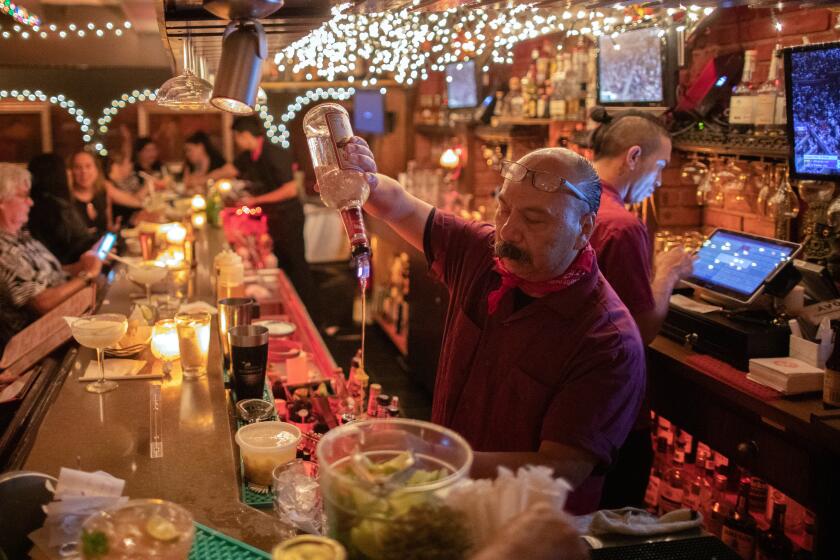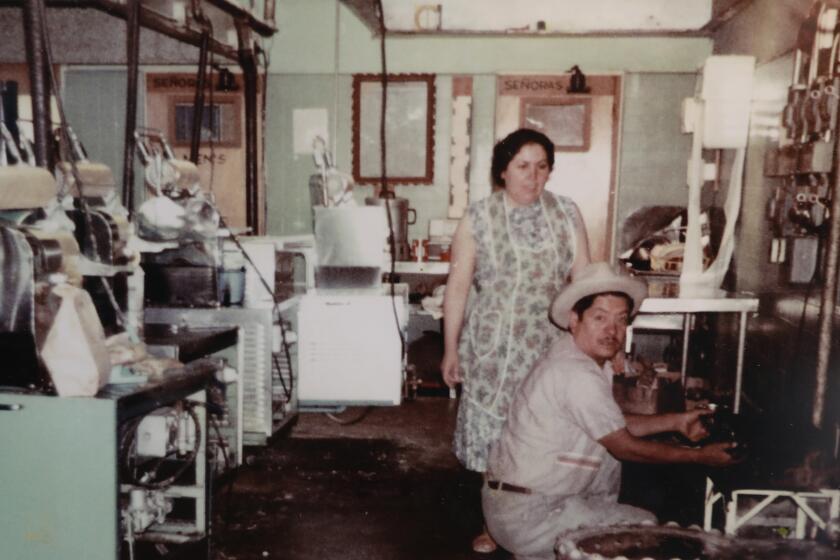
- Share via
You can count on nothing in life, but death, taxes and a line at Tito’s Tacos. Whatever the time of day, people wait for the hard-shell tacos, the goopy enchiladas, the freshly fried chips and cups of horchata.
“We closed for 2 ½ months during the pandemic,” says Tito’s co-owner Wirt Morton. “When we reopened, there were about 250 people surrounding the building, three TV networks, and we realized we were going to make it.”
We tallied a list with scores of classic Mexican restaurants across the region. Here are our top picks.
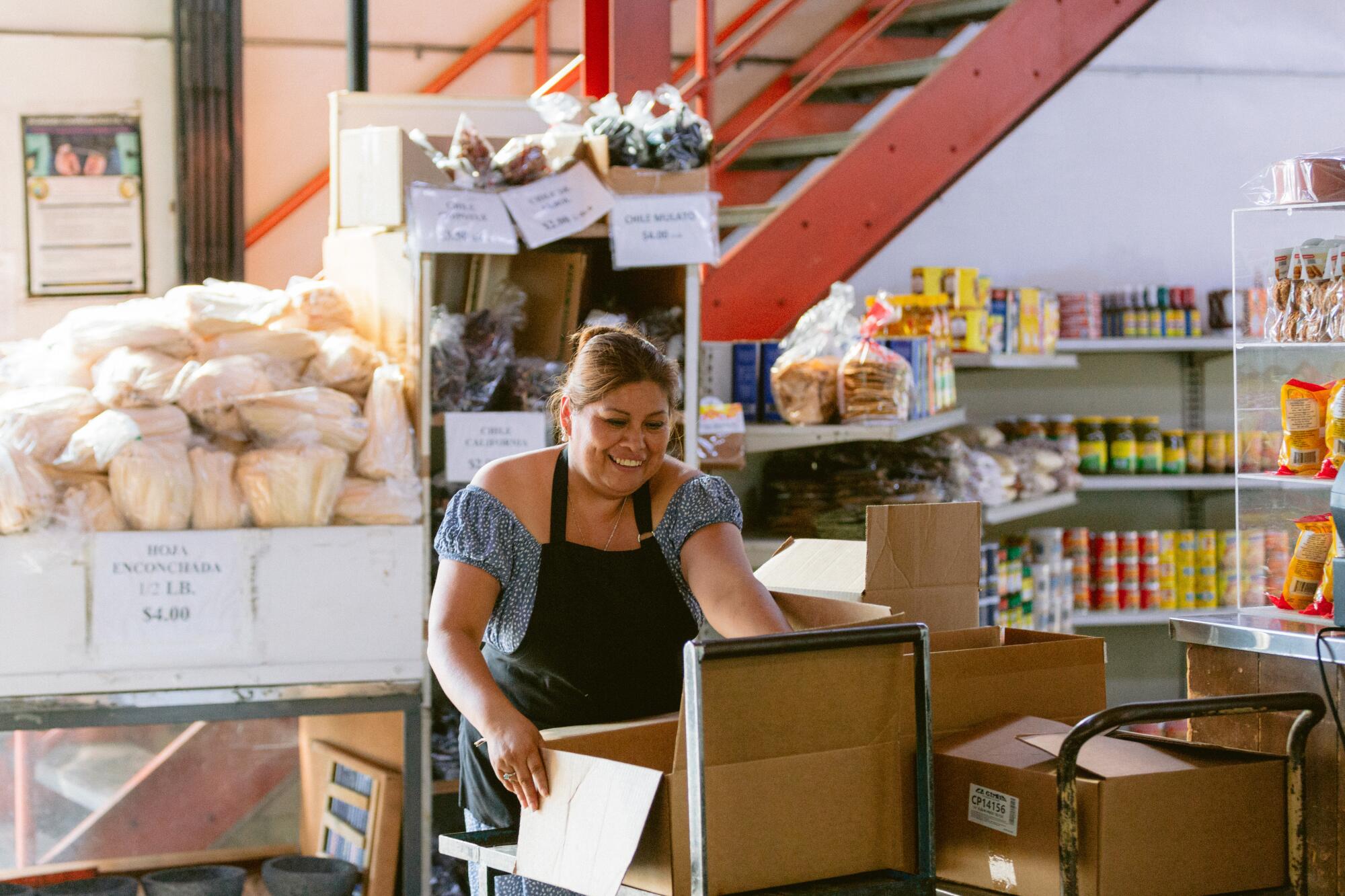
On a slow day, Tito’s serves about 3,000 to 5,000 crunchy tacos. On a busy day, they fry up around 8,000. Filled with shredded beef, iceberg lettuce and brimming with cheddar cheese, the tacos are the restaurant’s top seller.
“The reason Tito’s food is so special to our followers, our customers, is because we make the food fresh every day,” says co-owner Lynne Davidson. Her grandfather, Benjamin Davidson, opened the restaurant in 1959 with former business partner Benny Vizcarra.
Mocked, maligned and ignored, Cal-Mex dining is a testament to our state’s true history — and the food is glorious
We recently visited for an exclusive behind-the-scenes look at how Tito’s makes its fried tacos and so much more.
3:37 a.m. — At the tortilla factory
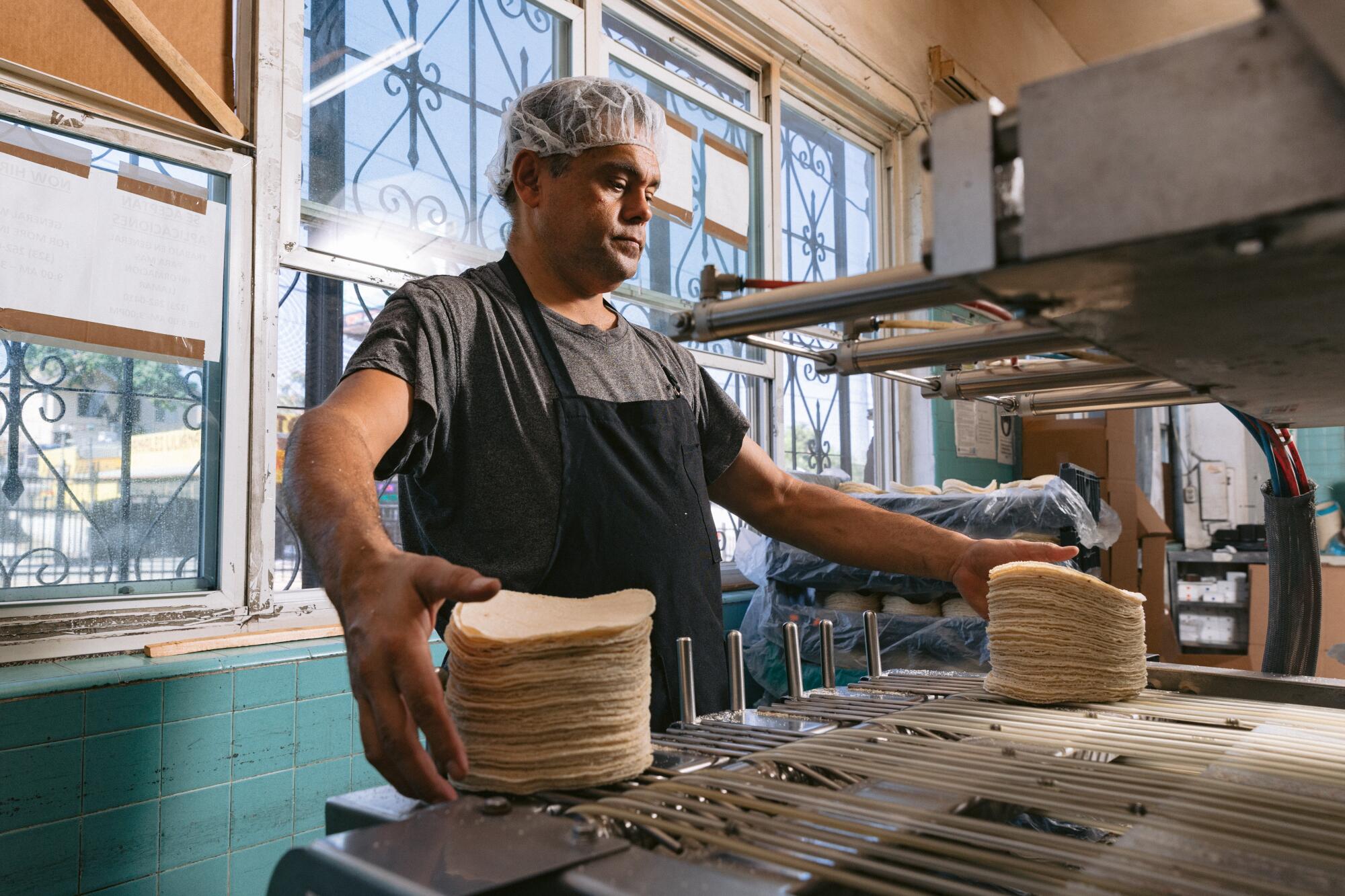
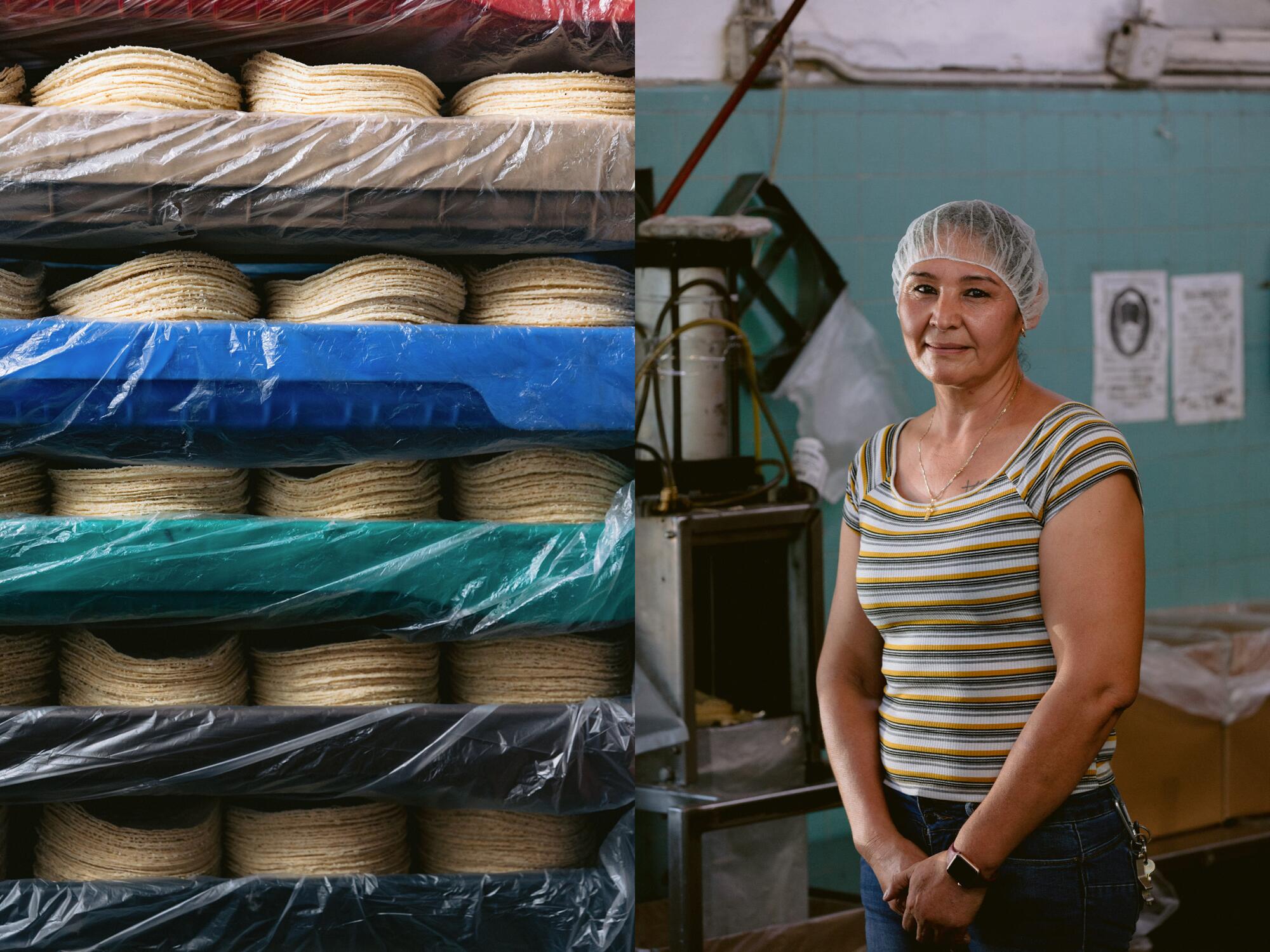
Sunrise is still hours away, but Fernando Ruiz Jr., general manager of La Gloria Mexican Foods, is showing us the early-morning action at the Boyle Heights tortilleria that supplies Tito’s Tacos. “Here, we’re cooking the corn — 2,500 pounds — about two hours,” he says as workers stir stainless steel vats of yellow corn and water. “Then we let it steep for six to eight hours, depending on the tortilla we want. After that, we mill it.” He points toward two grooved metate stones, like the ones inside the mechanical mills whirring away as drained corn goes inside one side of the mill, where it’s ground into globs of masa for tortillas.
“It’s pretty much the old metate style that Indians used to use, but it’s just mechanically made now,” says Ruiz Jr. “We mix it, we add water, the masa, preservatives, anything we need, and then let it mix for about five minutes.” As he talks, we watch the masa work its way through a machine where it is flattened and rolled out after going through a tortilla cutter. “It passes through the oven at about 450 degrees,” Ruiz Jr. says. “One pass, turns over, cooks the other side, and turns over. So you get both sides.” Then they go on the cooling conveyer belt. “But what we do for Tito’s, we added this [separate belt] to bypass the cooling system so the tortilla’s hot — so it’s easier to roll when they’re making their taquitos. Once it’s counted and stacked, we get it into boxes, seal it up and it’s good to go.”
Los Angeles’ Mexican restaurant chain El Cholo has dozens of employees in the ‘20-year club.’ Here are five of the longest-serving.
6:52 a.m. — At Tito’s commissary
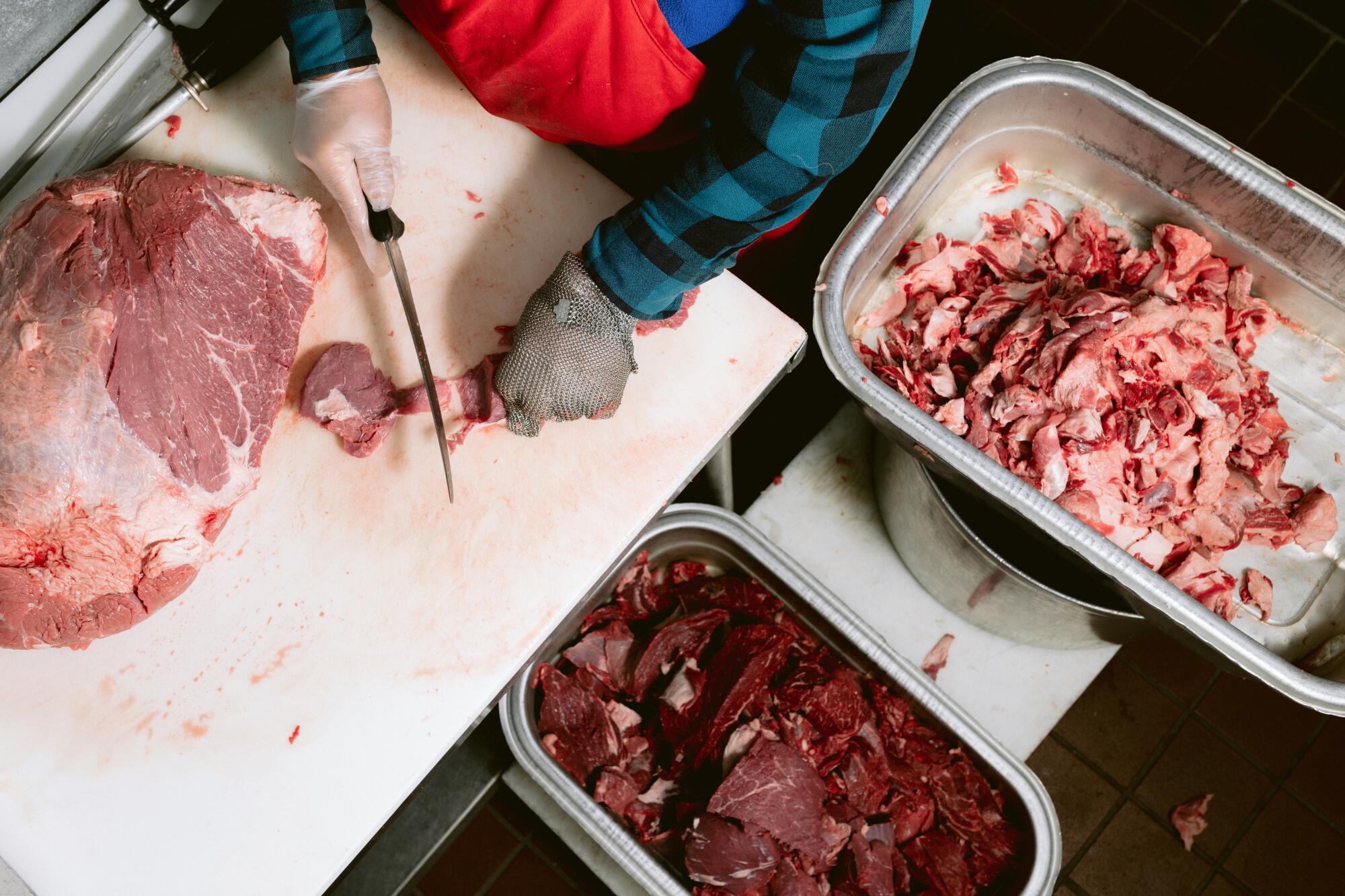
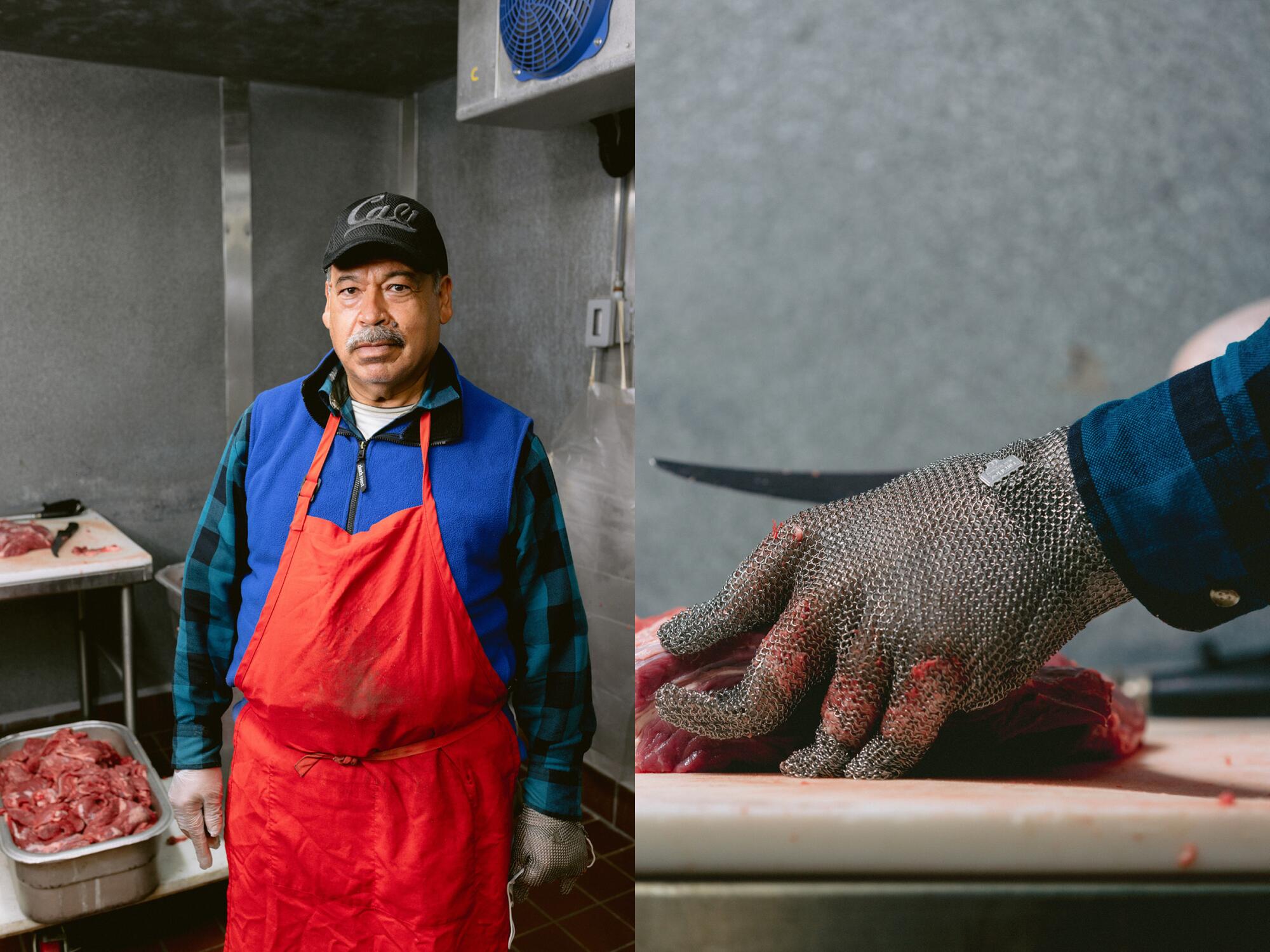
The tortillas have arrived, and workers begin unpacking the tortillas and checking to make sure they’re all in good shape. Horatio Gutierrez takes a large stack of newly unpackaged corn tortillas, places the stack inside a machine, closes the lid, and seconds later uncooked tortilla chips fall to the bottom. “They used to do this by hand,” Gutierrez says as he tilts a container of freshly cut chips into a large, clean white garbage bucket. “This machine is a lifesaver. We have about eight to 10 buckets of chips every day.”
At a stainless-steel table in another part of the commissary, Juan Ordaz, butcher at Tito’s, cuts fat away from a hunk of beef chuck. “Anything we don’t need gets removed. For example, this is bone. We must always remove it and make sure the meat is stripped of bones or nerves [and] what’s left of the fat. Then I start making cuts for the taco meat. I think it takes about 10 minutes to completely finish prepping a piece of meat like this.”
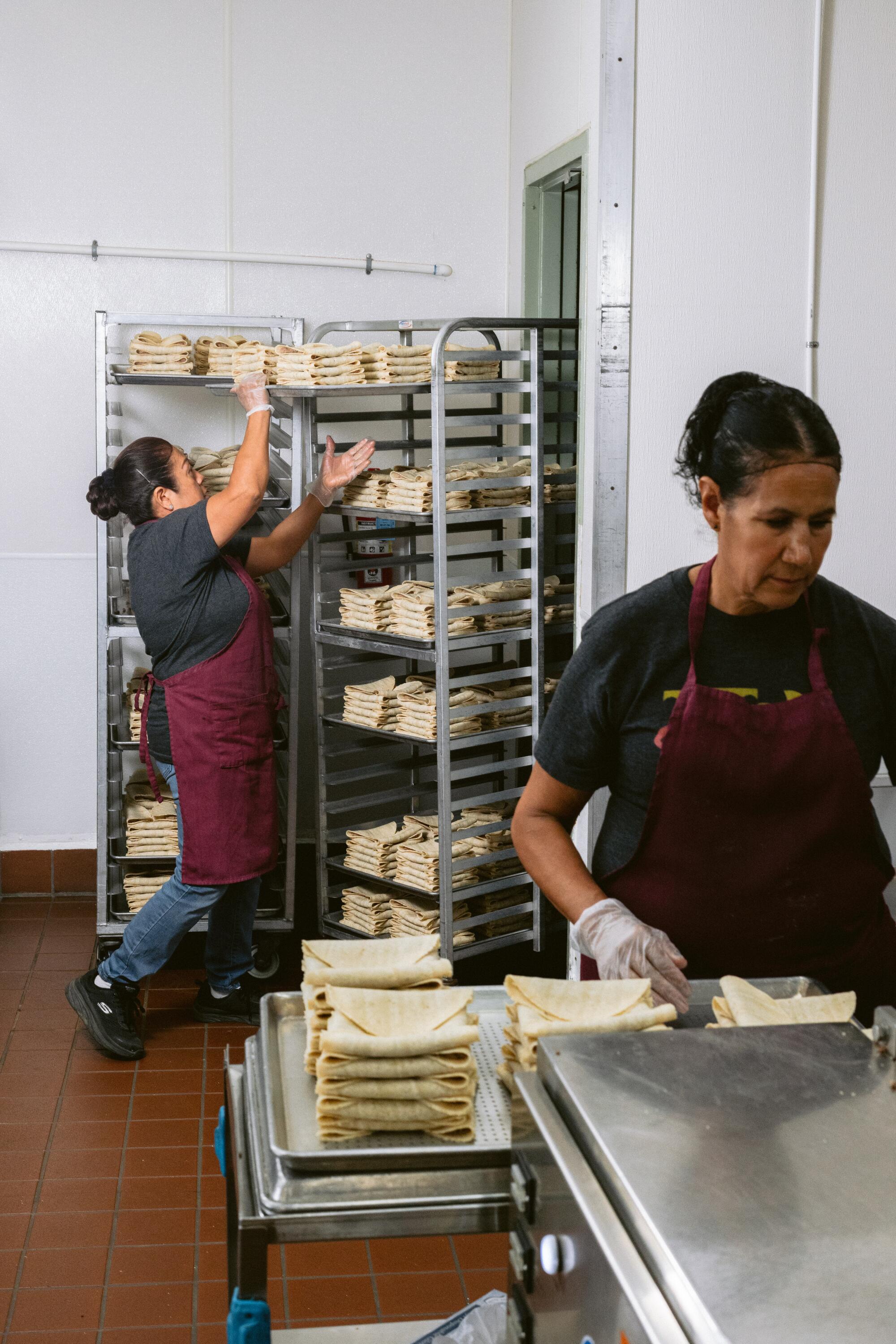
“We cook [the meat] for about 2 ½ to three hours, then bring it here to this machine,” Gutierrez says. “This machine is a buffalo chopper.” In with the meat goes chopped onion, salt, oregano, potatoes and the meat’s cooking juices. “That’s why, when you take a bite into the tacos, the meat is so nice and juicy, because we add a lot of the meat’s own juice to it.” He spreads the cooked, chopped meat onto sheet pans, which get refrigerated until it’s ready for the taco machine.
“At that point,” says co-owner Morton, “the filling is put into a machine that portions out the taco meat, then [puts it] through this taco folding machine; we fold the tacos. It’s a machine run by four individuals. We could produce as many as 1,500 tacos per hour. The beauty of it is that not only are they uniform in size but they also cook equally, as they should.” The folded tacos are put into a blast freezer before they get packed for the restaurant.
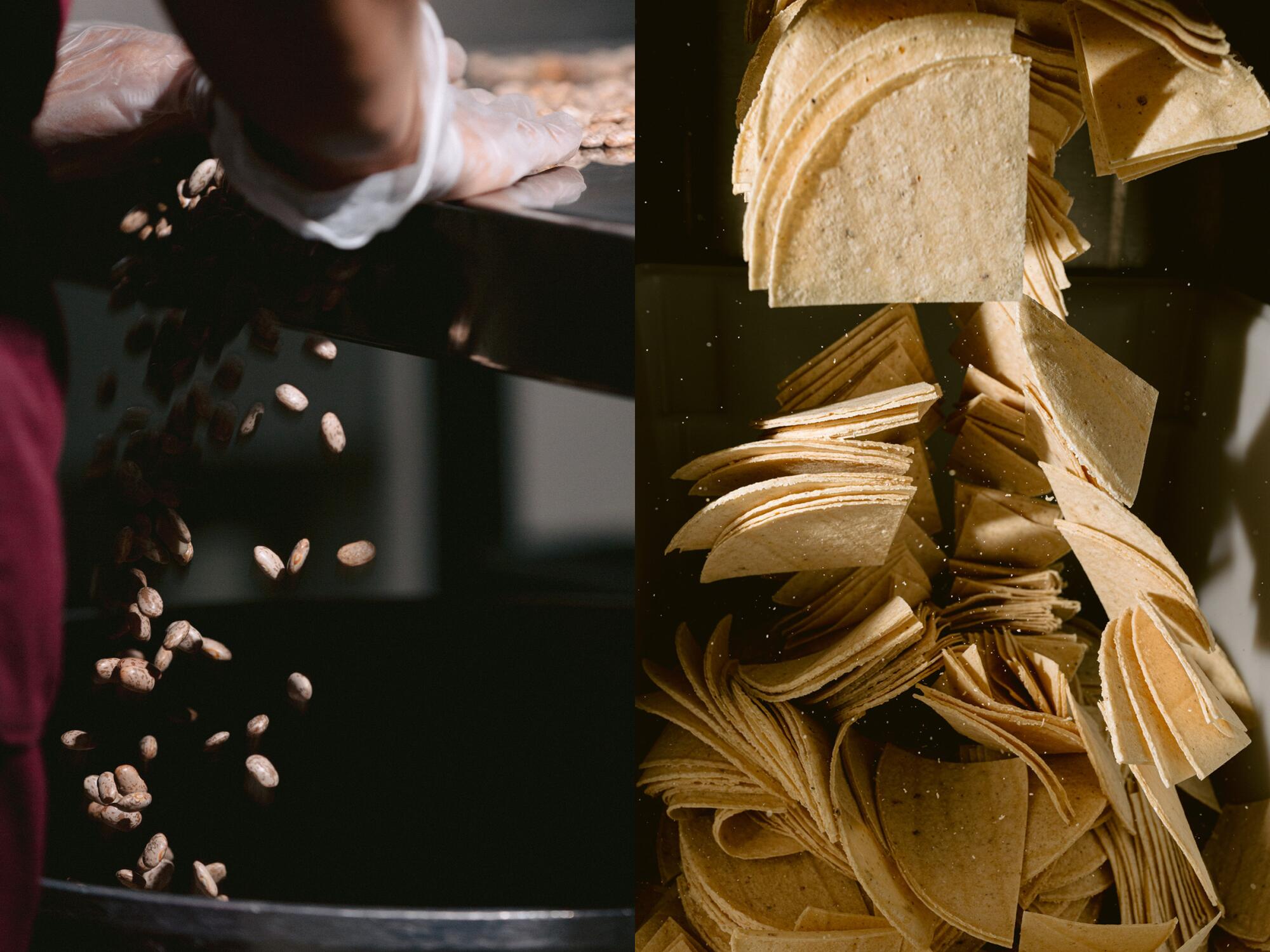
In another part of the commissary, workers sort through uncooked pinto beans looking for any stones that might need to be removed, while cooks holding giant spoons stir massive steaming pots of beans. “Usually we cook two to three pots of beans every day, early in the morning, at 5 in the morning,” Gutierrez says. The beans are cooled with large fans before they are ground and refried at the restaurant.
Next, Gutierrez shows us how heads of iceberg lettuce are fed into a chopper. He presses down on the machine handle, and the iceberg heads are transformed into shredded lettuce strips that fall from the chopper like confetti. “We do anywhere from four to eight cases of lettuce a day,” he says. “We wash it, we put it back in clean containers, and then we’ll take it to the restaurant later in the day.”
8:33 a.m. — Salsa in the morning shift at Tito’s
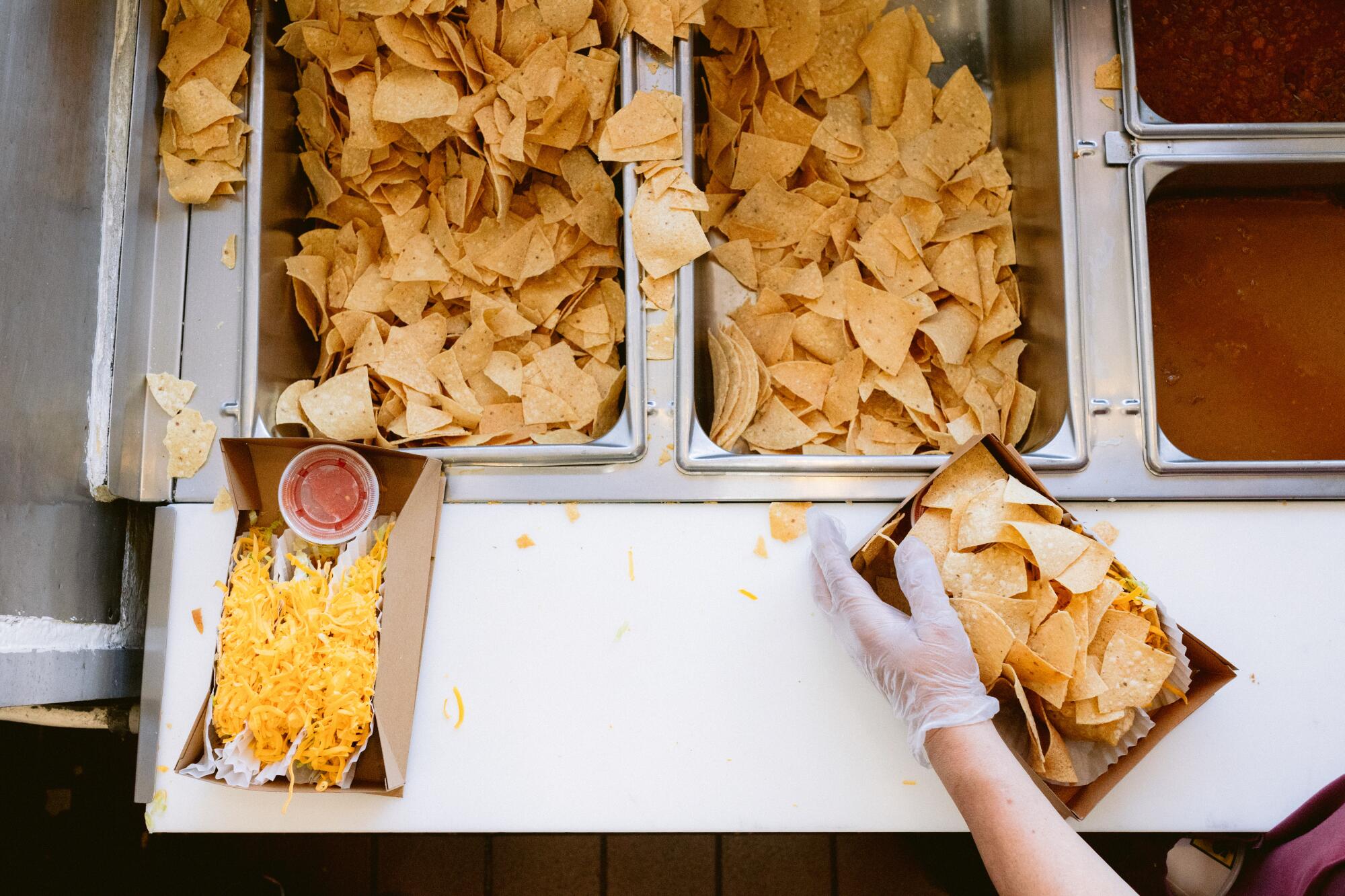
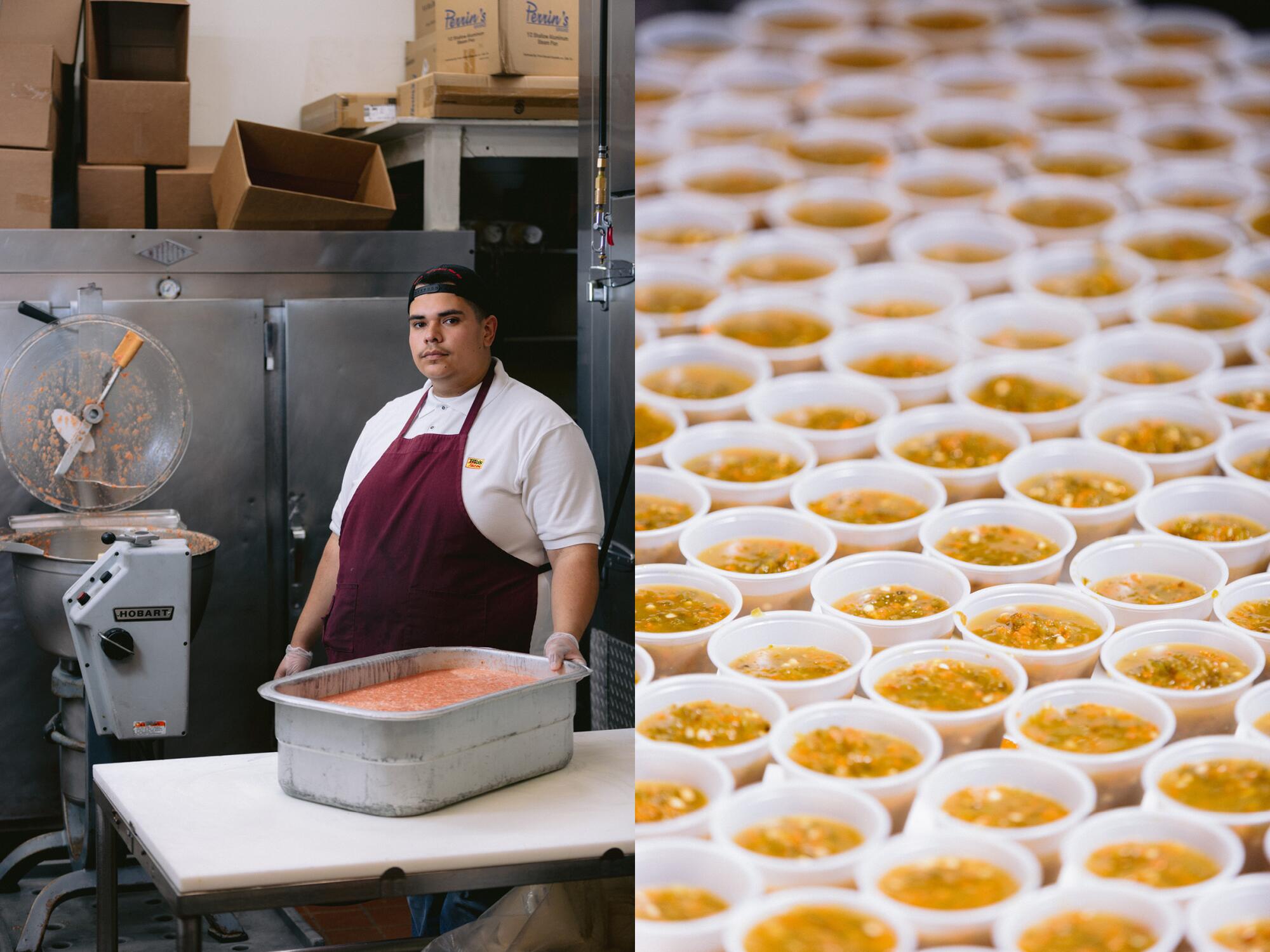
“This is chile con carne; it’s meat for the burritos,” says Severiano Gonzalez, morning lead cook at Tito’s Tacos, as he stirs a huge pot of stewed meat inside the on-site kitchen at the restaurant. “So it heats up evenly,” he explains. Next, he turns his attention to foil oven pans filled with rolled enchiladas. “I’m adding enchilada salsa,” he says as he covers the enchiladas in a layer of green salsa, then tops the tray with foil. “When it’s time to open, these enchiladas will be ready.”
Assistant manager Sam Escobar turns his attention to Tito’s famous mild salsa. “We have jalapeño, black pepper, oregano, salt, we use some apple cider vinegar as well as, obviously, tomato and onion,” he says as he adds a tub of whole tomatoes to an industrial-sized food processor.
He then moves on to break up huge slabs of cheddar cheese into smaller blocks using a wire cutter. He feeds the more manageable pieces into a shredder to prep trays of cheese. Tito’s staff members continue to slice avocados, chop onions and tomatoes and check the temperatures of hot and cold foods with automated thermometers before it’s time to open the restaurant.
Soon, the chip frying begins. Into a large fryer full of bubbling oil go the tortillas that were cut into chips at the commissary. “What people love here are the chips and the salsa,” says “chipsario” Jose Luis Recendez, “because we make them with a lot of heart. It takes four minutes to fry [a batch] well. I place the [just-fried chips] in a pot, and while they’re fresh, I put the salt on so it sticks and the chips turn out really good.”
Next comes the frying of the most popular Tito’s item: the tacos. “We do between 26 and 28 tacos per basket” for frying, says Tito’s general manager Mario Presa as the previously assembled tacos are slid into a fry basket. “It takes between 2 ½ and three minutes to fry the basket of tacos. On a busy day, I would say we fry about 8,000 tacos. Tacos are the No. 1 seller. Look, when the taco looks sexy like this, they’re good!”
11 a.m. — Open for business

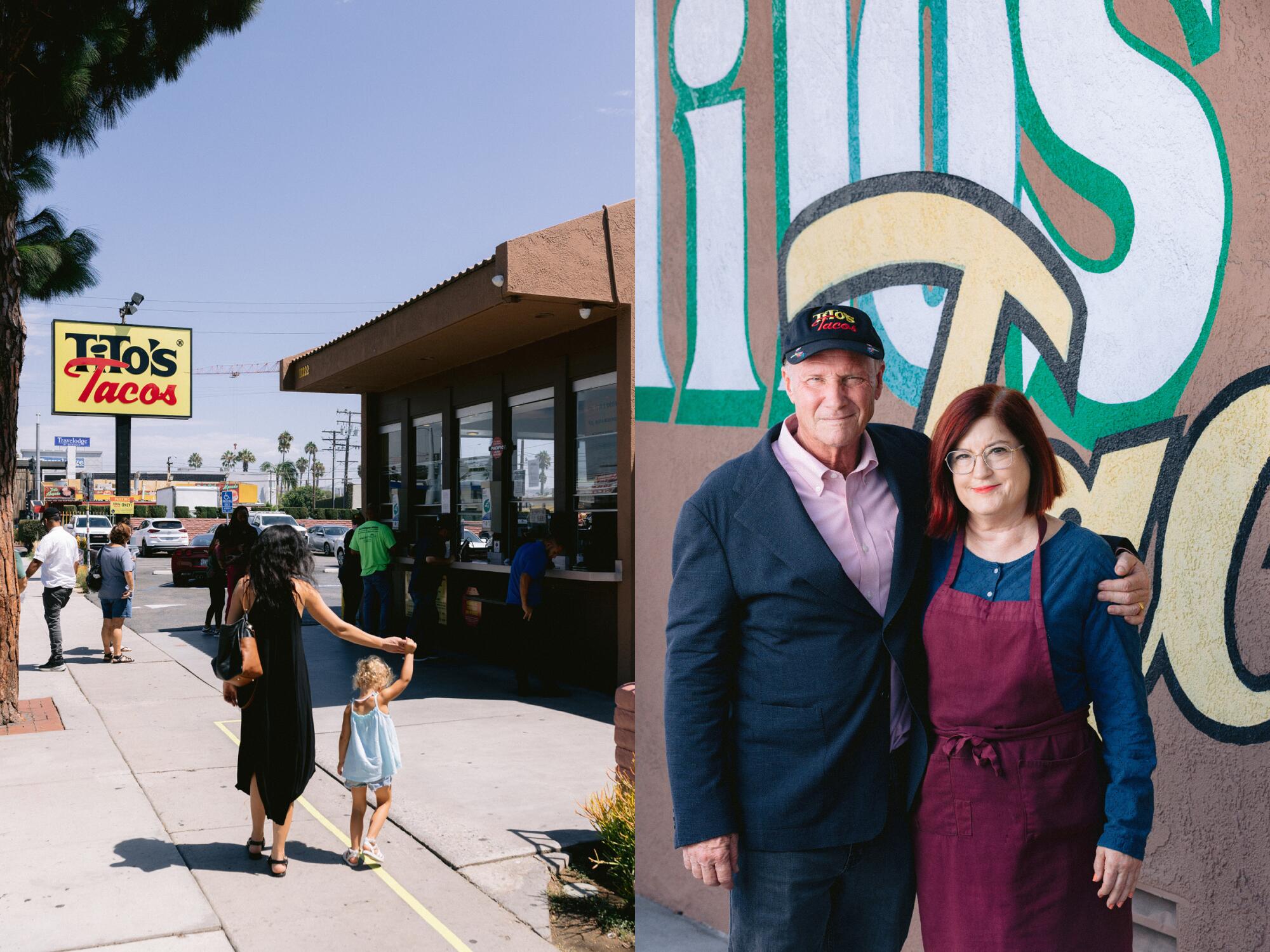
The order window opens, and the first customer steps up to place an order. He’ll have three tacos, please, with extra cheese.
Cal-Mex food is permanently on our state’s menu. We take a closer look at some of the cuisine’s beloved institutions in Los Angeles and the part they play in the city’s identity.
There will be a line that wraps around the side of the building for most of the day, until the restaurant closes at 8 p.m. But tomorrow, and every day, the Tito’s Tacos cycle starts again.
More to Read
Eat your way across L.A.
Get our weekly Tasting Notes newsletter for reviews, news and more.
You may occasionally receive promotional content from the Los Angeles Times.
